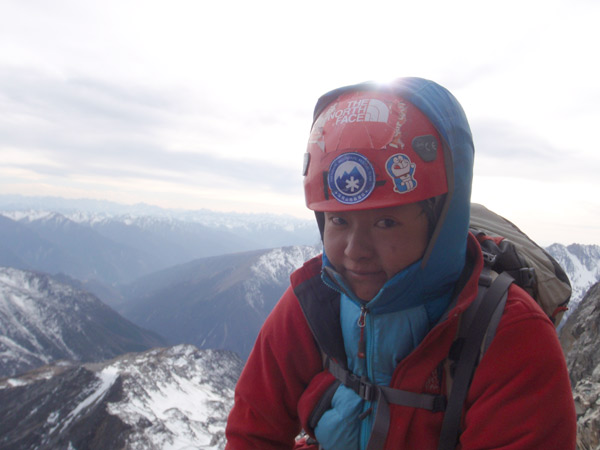Profiles
Tragedy continues to haunt
By He Dan (China Daily)
Updated: 2010-12-23 07:43
 |
Large Medium Small |
Related video: Summit memory
BEIJING - If only she didn't have so many "if onlys", more of her fellow students would be alive today.
"Death is a part of mountaineering," climber Li Lan said -- a difficult lesson after an avalanche swept away five of her fellow climbers.
|
 Li Lan, a former member of the Mountaineering Association of Peking University, who lost five teammates in an avalanche eight years ago, smiles while scaling a mountain in this undated photo. [Provided to China Daily]
|
She learned something else as well: "Don't die from stupid mistakes."
And even years later it is still difficult for her to look back on the tragedy.
In August 2002, a team from the Mountaineering Association of Peking University, a student club of amateur climbers, went to challenge the 8,012-meter peak of Shishapangma in south central Tibet.
Fifteen went up the mountain. Only 10 came down alive.
The tragedy received a lot of media attention in the following months, and had a ripple effect on the development of China's amateur mountaineering.
Yet more than eight years later, Li is still surviving the emotional aftermath of the deadly avalanche.
"The best way to commemorate them is to climb the mountain again," Li said at the beginning of a documentary she was featured in while scaling the mountain again in September 2009.
The film, Summit Memory, debuted on Nov 18.
Since the tragedy, the university has adopted a stricter approval procedure for outdoor adventures the club organizes.
"They invited experts for reviews and advice," said Li, who participated in a climbing event organized by the club the next year.
Preventative measures such as hiring local Tibetan guides have also become a must, a policy later adopted by the Chinese Mountaineering Association for any amateur climber.
Yet even without these new measures, it was an accident that didn't have to happen.
Before the climb, the China Tibet Mountaineering Association suggested the student team rent a satellite telephone and hire a few Tibetan guides. They also warned them the weather was warm and it was dangerous to climb the mountain in summer.
But the excited students, who only had time during the summer vacation, took none of the suggestions.
Li was among the oldest of the climbing team - she had graduated from the university two years earlier, while most of the others were still students.
She was as excited as most of her teammates because an 8,000-meter climb is an achievement many amateur mountaineers hope to accomplish, and Shishapangma is the 14th highest mountain in the world.
They divided themselves into three groups, the first comprised of the most experienced and strongest to lead the way. Li belonged to the second group.
After having lost contact with the first group for nearly 20 hours, they realized their teammates were buried under an avalanche.
Li rushed to the area, which she recalled as "equal to half a football field". Deep in a V-shaped valley, covered by fresh snow that had been falling for eight days, Li found the body of a teammate.
"If only they took a route along the ridges of the mountain, they would have been fine," said Li.
Now an expert in mountaineering who works as a coach at China Tibet Mountaineering Guide School in Lhasa, Li has too many "if onlys".
But time can't be rewound.
"If it (death) is due to a natural power, I can accept it," Li said.
Immediately after the tragedy, Li recalled, "I suddenly felt mountaineering was a very stupid thing to do."
Li kept to herself for a long time, but through the years she has come to see mountaineering differently.
"Climbing is an art of survival," Li said. "You throw yourself into a harsh environment where you need to figure out every possible way and make use of every possible ability to survive.
"It is a process of creating a new self, from creating a stronger body, then your soul and mind."